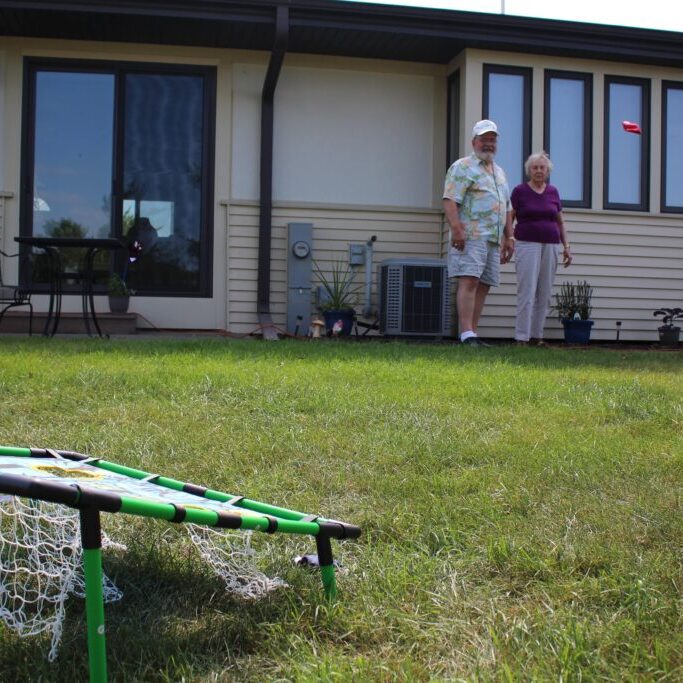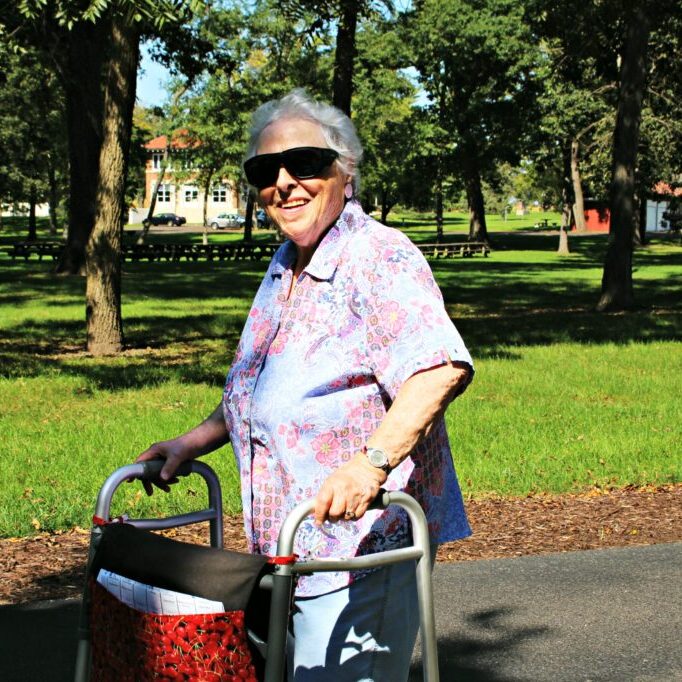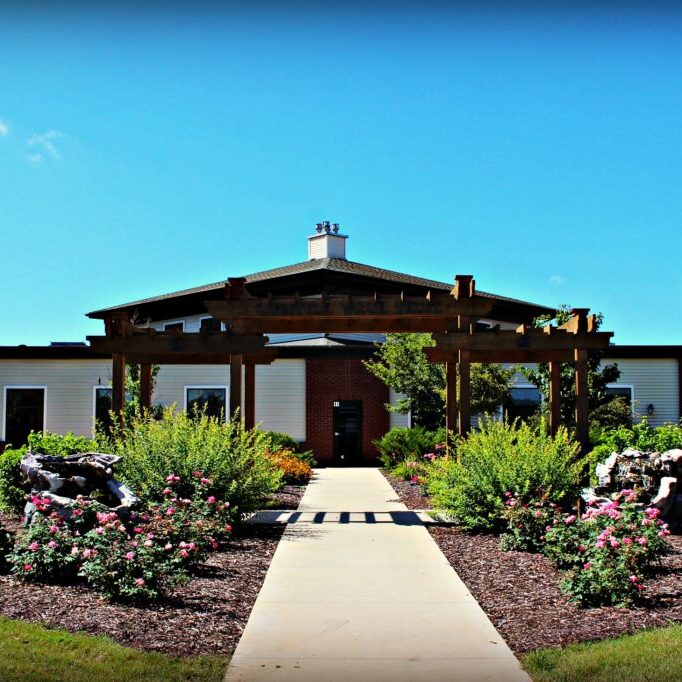What is the Difference Between Assisted Living and Memory Care?
Deciding to move from your home to a new residence can be overwhelming. When the move is necessary due to a need for care and assistance, it can make the whole experience even more confusing. What type of care is needed? How much? Are there memory deficits, physical concerns, or both? Who and where can offer the right care?
When it comes to assisted living and specialized memory care services, below you’ll find some guidance for your consideration. Our campus offers a full continuum of care, with assisted living and memory care being two of the levels we offer.
Assisted Living vs Memory Care In a Nutshell
Assisted living is for individuals who are fairly independent, but need additional assistance at certain times with certain tasks. Think of it as a senior apartment building that has staff on hand to help with those “extras” the resident needs.
At most communities, the services vary based on what the resident requires, with tiered plans and options. Some residents may not even regularly take assistance, but they have peace of mind knowing they are there should they need help on occasion or down the road. The care team helps determine which level of assistance is best for each resident, and can help navigate if or when those needs change in the future.
Memory care is a specialized type of assisted living for those whose primary needs are related to memory loss. Memory care takes assisted living and increases the level of safety while offering extra guidance and reminders for residents. The communities entrances are secured to prevent wandering or elopement. Individuals who need memory care may struggle with daily tasks but also are easily confused or frustrated with tasks that used to come easily to them. The support in a memory care environment primarily focuses on reminders and cues for activities of daily living versus physical assistance
“At both assisted living and memory care, services and programming aim to keep the residents as safe, healthy, engaged, and independent as possible.”
Key Differences to Consider When Comparing Assisted Living and Memory Care
Beyond the basic overview of the two types of communities, there are some additional key points of difference to consider when deciding between assisted living and memory care.
- Staffing
No matter which type of assisted living you or your loved one ultimately moves to, there will be skilled staff on hand 24/7 to assist with daily living activities, such as bathing, dressing, and meal preparation or selection. Both levels of care have nurses who oversee care onsite several hours a day, with trained caregivers onsite at all times.
In memory care, the staff have additional specialized training to help them assist residents who are struggling with a cognitive digression. These staff members know what type of empathy to show and are aware of how to handle situations should the resident become frustrated. - Environment
All senior communities are designed with residents in mind. You’ll find most to have a warm, homelike atmosphere, with subtle features built-in to aid independence and offer support. You’ll see private apartments or rooms, handrails throughout halls, common areas for recreation and socialization, and much more.
Memory care facilities have additional features to lower potential frustrations and confusion, such as circular layouts without long hallways, motion lights to eliminate confusing shadows, and simple patterns in carpeting and upholstery. Safety features, such as subtle alarms, are set up to alert staff if a resident is wandering into an area where they should not go or trying to exit the building. Many memory care communities, like the one at Three Pillars, also have secured outdoor settings that the residents can freely access and enjoy. Most traditional assisted living communities do not have this degree of specialized features in place. - Physical Assistance
The way assisted living and memory care communities are licensed dictates the degree of physical assistance the staff may offer to residents. Assisted living communities are either Residential Care Apartment Complexes (RCACs) or Community Based Residential Facilities (CBRFs).
RCAC assisted livings are usually limited to physical assistance that can be provided by one person. CBRF assisted livings tend to be able to support a resident who needs two-person assistance or mechanical lifts (such as a Hoyer or sit-to-stand). This higher level of assistance also often comes with up to three hours of nursing care per week, so this type of community is beginning to replace skilled nursing services.
Most memory cares are licensed as CBRFs, but the level of physical assistance and nursing care they offer can vary from community to community. It’s best to inquire with the individual facility you are exploring. - Activities and Other Services
Assisted living and memory care residences often have a wide variety of planned activities for residents to participate in. From daily activities like exercise, creative crafts, and brain-engaging games to weekly or monthly activities like shopping trips or scenic drives—there is something for everyone. With a full calendar of offerings, there is plenty to do to stay active and engaged, but the resident can determine how and where to spend their time.
In memory care, the activities are more structured and designed to exercise cognitive ability. Activities that are reminiscent of what they have done in their past are especially helpful. There may also be a variety of activities and supplies available for residents to do on their own, like puzzles or art projects. Whatever is available, it is always connected back to the safety and well-being of the resident.
At both assisted living and memory care, additional services such as pastoral support, social services, housekeeping and laundry are usually included at varying frequencies. - Meals & Nutrition
Both levels of care offer three nutritious meals per day plus snacks to the residents. At memory care, a resident will often need assistance in choosing what foods are of the proper nutritional value and when to eat to maintain optimal health. It is important they still have a choice when it comes to meals, but the options are pre-determined by the trained staff to best address their physical needs. The dining room is often designed with comfort in mind and will have less distractions than an assisted living dining room may have.
At assisted living, depending on the level of care or service package the resident has, two or three meals per day plus snacks may be included for them. Some apartments have a full or nearly-full sized kitchen, so may choose to cook for themselves on occasion. The dining area is seen as a bustling hub for socialization and a wonderful time to spend with new friends.

Specifics are Important in Assisted Living or Memory Care
As you know each setting offers different options depending on what the residents’ needs are. Some communities, like ours, even offer both levels of care on one campus, while others are standalone units.
After you narrow down what type of care you or your loved one need and which communities may be viable options, one thing is certain: you must take a tour and ask questions. The specifics matter, because beyond the basics, each community has its own unique offerings and protocols. If you are comfortable with the environment and the care provided, you are on your way to finding a wonderful home.
Do you have additional questions about this topic? We’d love to be a resource to you—don’t hesitate to contact us. Leave us a comment below or contact us to inquire.




